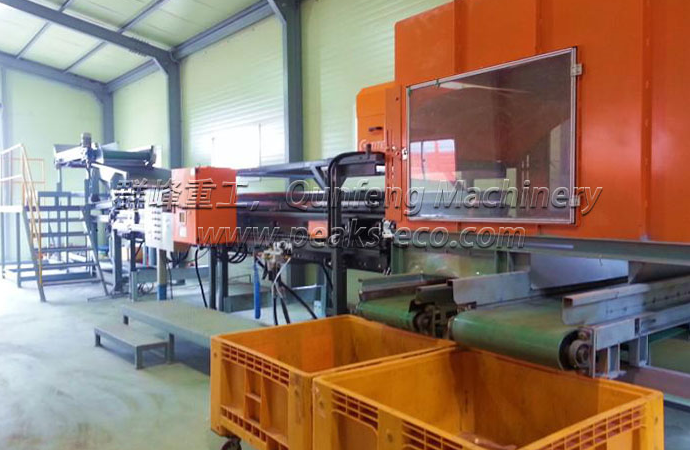NIR Optical Sorting is one of the most rapidly developing high technologies in the last 20 years. This technique is convenient, fast, efficient, accurate, and less expensive to analyze samples, does not destroy the sample, does not consume chemical reagents, does not pollute the environment, etc. Therefore, this technique is more and more popular.
What is near-infrared light?
Near-infrared light is light with wavelengths between 800 and 2500 nm. In the electromagnetic spectrum, the near-infrared region is between visible light and infrared light. A person cannot see near-infrared light but can feel it as heat. The advantage of NIR light is that relatively little light is absorbed, so samples can be analyzed directly without dilution or another pretreatment.
What is near-infrared spectroscopy?
Near-infrared spectroscopy is a very useful analytical technique because different molecules absorb and reflect near-infrared light to different degrees. When a molecule absorbs energy from NIR light, this energy is converted into kinetic energy. As a result, the atoms within the molecule move faster, bending, stretching or rotating around each other (see figure below). The more light a molecule absorbs, the less light it reflects. The near-infrared part of the spectrum is mainly absorbed by the bonds between hydrogen, carbon, oxygen, nitrogen, and sulfur. These chemical elements are present in water and compounds such as clay humus and organic matter. In addition, trace elements are not visible in the NIR spectrum because they do not have such bonds.
Working principle of near-infrared spectroscopy
Various hydrogen-containing groups in the molecules of organic and some inorganic substances are excited to resonate when irradiated by near-infrared light, and at the same time absorb a portion of the light energy. Measuring their absorption of light gives an extremely complex infrared spectrum, which represents the characteristics of the substance under test. Different substances have a rich absorption spectrum in the near-infrared region, and each component has a specific absorption characteristic. Therefore, NIR can reflect information about the composition and structure of a substance and thus can be used as an effective vehicle for obtaining information.
The measurement process of the NIR analysis technique is divided into two parts: (1) calibration and prediction (as shown in Fig. 1), (1) calibration: (i) select the calibration sample set, (ii) measure the spectral data and physicochemical basic data of the calibration sample set separately, (iii) take the spectral data and basic data, and build a calibration model with appropriate chemometric methods; (2) prediction: collect the spectral data of the unknown sample, correspond to the calibration model, and calculate the sample components of the sample. It can be seen that establishing an accurate calibration model is the most important thing in the application of NIR spectroscopy.
Qunfeng Optical Recycling Sorting Machine
This optical Recycling Sorting Machine is a new recycling technology design and made by Peaks-eco. We hope to cooperate with you for a long time.

没有评论:
发表评论